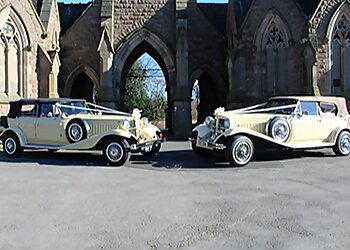Tudor, age 88 of Tipp City, passed away August 6, 2014. He was born November 7, 1925 in Dayton to the late Forrest and Rachel Tudor. 11 reviews of Tudor Funeral Home, Inc. 'My mother wanted to be cremated after she died in New York City in April 2014. I made a number of calls, and Tudor Funeral Home gave me the best price, absolutely! Only a third or even less of the price that other establishments wanted. 'Joe' was great to work with. Questions answered quickly. Tutor Funeral Home 601.849.9995 822 Simpson Highway 149, Magee, MS 39111 601.847.9199 3035 Simpson Highway 13 Mendenhall, MS 39114 Site by Sundog Studios.
Age 70, affectionately known as “Tony”, of 2nd Avenue, Licorish Village, My Lord’s Hill, St Michael.
Son of the late Walter and Meryl Tudor.
Brother of Brenda Evelyn née Tudor – Principal Consultant of Evelyn Associates Ltd, Leighton Tudor – Chauffeur of Sun Tours Limited and Robert Tudor – Proprietor of Shoes for-U,
Uncle of Joseph and Jason Evelyn, Dwight, Jamar and Kimberly Tudor, Janelle Tudor-Whitehead of Canada.
Brother-In-Law of Yvette and Beverley Tudor.
Cousin of Alwyn Archer Q.C. – Attorney-at-Law, Bentley, Michael, Stanton and Franklyn all of the U.S.A, Cedric, Eleanor, Alfred, Roslyn, Henderson, Robert of Canada, Kenneth Archer, Marlene Bradshaw and Velma Drakes.
Relative of the Tudor and Archer families.

Friend of Elva Alleyne, Kimolene Nelson-Maloney – Caretaker and many others.
The funeral of Milton Anthony Tudor leaves Paramount Funeral Home, Hindsbury Road,St. Michael on Wednesday July 1st, 2020 at 8:45 a.m. for Westbury Cemetery, where relatives and friends are asked to meet at 10:00 a.m. for the Graveside Service to celebrate his life, followed by the interment.
Floral tributes may be sent to Paramount Funeral Home no later than 8:30 a.m. on Wednesday July 1st, 2020.
The body will repose for viewing in the Chapel of Paramount Funeral Home from 3:00 p.m. until 5:00 p.m. on Tuesday June 30th, 2020.
Fond remembrances and condolences to the family may be directed toparamount@caribsurf.com
Mourners are asked to adhere to the social distancing protocol.
Head from a terracotta bust dating from 1730 of the Elizabethan playwright William Shakespeare
Funeral customs in Shakespearean times were quite different than they are today. It is interesting to compare and contrast the similarities. It is important to note that statistically death was quite different than it is now. Only about 10% of the population lived past the age of 60 during this era, and infant and child mortality was extremely high. It’s been said that if a child made it to age 12, he was just as likely to live to be 70.
Signs of Mourning
Those in mourning would have been easily identified by their dress during the Elizabethan period. If the family was very wealthy, they may even provide black clothing for professional mourners. Black dresses, pins, stockings, gloves, and sprigs of rosemary in a hatband were all visible signals that a person was in mourning. Mourning rings were also a part of Elizabethan funeral traditions. Made to memorialize death, they often featured skulls, coffins, or crosses.
Onlookers would know a funeral procession by distinctive banners and coats of arms carried by servants. Church bells were rung while the coffin was transported to the church graveyard. However, if the death was considered a suicide, the body could not be buried in the churchyard.

Preparation of the Body
During this period, the body would be washed by a midwife and wrapped in a simple sheet before it was placed inside the coffin. Young women would be adorned with flowers. However, experts believe that flower sprays and arrangements were not used during this time unless they were tossed into the grave with the deceased. Married women and men might be more likely to have herbs rather than flowers placed in the grave.

Feast of Mourning
Tudor Funeral Home Barbados
Traditionally money would be distributed to the poor and a feast would be held following the funeral. The whole neighborhood or the entire village would likely be invited to the meal. For families that had less money, the mourning feast would be limited and include only cakes and ale.
Grave Markers and Cemeteries
For common people, there were not markers or headstones to mark the site of the grave. Those who were wealthy might be buried inside the church. In these cases, a flagstone would be lifted and the grave dug before putting the stones back in place.
Tudor Funeral Home Incorporated

During this period it was common for the graveyard to become overcrowded with bodies. Old graves would be dug up and the bones collected and removed to a building behind the church. The wealthiest people could afford to be buried in a private chapel or vault on their own manor.
While some of these traditions have fallen away, others have endured or have been adapted to fit the funeral needs and customs of mourners in modern times.

View More Secular or Societal Funeral Customs
